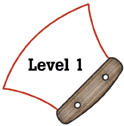|
Procedure
Students will:
-
Discuss how best to get comparable information (same altitude, same
time of day, and so on) to track weather patterns through the year.
-
Identify the information to be collected, such as cloudiness, temperature,
wind direction, chill factor, and so on.
-
Identify another classroom group (this might be an e-mail classroom
elsewhere in Alaska) who will share and compare information for this
activity.
-
Collect, compile and chart temperature reports at locations near
water (lakes or ocean) and at distances further from the water.
Reflection and Revision
Review information; look for patterns; discuss the patterns in terms
of why the sun is heating the Earth differently at different locations
and during different seasons.
|
|
Levels of Performance
|
|
|
Student work
is complete, correct and shows detailed evidence of the transfer and extension
of knowledge relating to factors that influence the sun’s heating of
the Earth. Student collects data reliably, clearly organizes the data, and
logically interprets the data to identify several weather patterns. |
|
|
Student work
is mostly complete and shows evidence of the transfer or extension of knowledge
relating to factors that influence the sun’s heating of the Earth.
Student collects and organizes data, and identifies patterns, though the
work may contain minor errors, inconsistencies or omissions. |
Stage 2

 |
Student work
may be incomplete and shows limited evidence of knowledge relating to weather
patterns and the factors that influence the sun’s heating of the Earth.
Student collects and organizes weather-related data but may be unable to
identify any weather patterns. |
Stage 1
 |
Student work
is mostly incomplete and shows misconceptions relating to the weather. Student
may collect limited amount of data but does not organize or interpret it
in a meaningful manner. |


